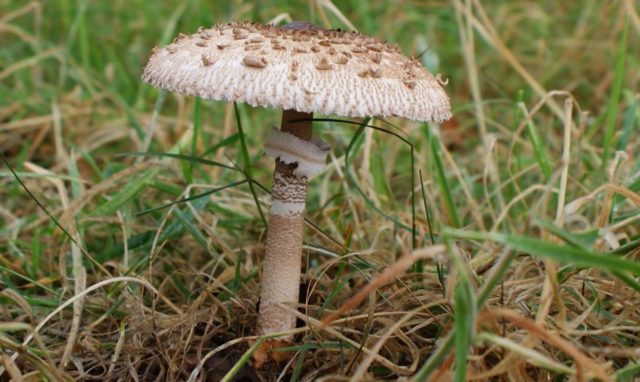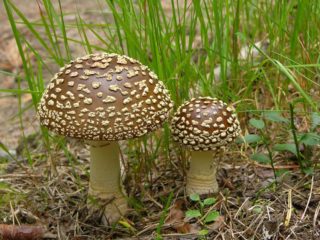Content
Elias's fly agaric is a rather rare species of mushroom, unique in that it does not form fruiting bodies every year. Russian mushroom pickers know little about him, since they have practically never met him.
Description of the fly agaric Elias
Like all representatives of the Fly Agaric family, this mushroom has a fruiting body consisting of stems and caps. The upper part is lamellar, the elements are thin, loose, and white.
Description of the cap
The cap is medium in size, it does not exceed 10 cm in diameter. In young specimens, the shape is more like an egg, and as it grows it changes shape to a convex one. Sometimes a bump forms in the middle. Color may vary. There are specimens with a pink cap and even a brown one. There are scars on the edges and they can curl upward. If the weather is humid, it becomes slimy to the touch.
 Description of the leg
Description of the leg
The leg is typical for representatives of this genus: smooth, thin, high, reminiscent of a cylinder in shape. It can reach from 10 to 12 cm, sometimes it has a bend. At the base it is slightly wider, there is a ring hanging down and white in color.
Where and how does it grow
The Elias fly agaric grows in regions with a Mediterranean climate. It is found in Europe, but in Russia it is very difficult to find. It is considered a rare representative of the Fly Agaric family. Grows in mixed and deciduous forests, prefers the proximity of hornbeam, oak or walnut, as well as beech. May live near eucalyptus trees.
Is Elias's fly agaric edible or poisonous?
Belongs to the group of conditionally edible. The pulp is dense, but due to its unexpressed taste and almost complete absence of smell, it has no nutritional value. Mushrooms appear at the very end of summer and early autumn.
Doubles and their differences
This species has quite a lot of doubles:
- The float is white. It is conditionally edible and does not have a ring. There is a remnant of a Volvo at the base.
- The umbrella is white. Edible look. The difference is the brownish tint of the cap; it is covered with scales.
- The umbrella is thin. Also from the edible group. It has a characteristic sharp bump on top, as well as scales over the entire surface.
Conclusion
Amanita Elias is not a toxic mushroom, but it is not worth collecting. It does not have a strong taste, and it also has many poisonous counterparts that can cause serious poisoning.

 Description of the leg
Description of the leg











